Origins of ALIVE OUTSIDE, Threads of Connection, and Kari Cholnoky Interview
Alive / Outside / Talking with Kari Cholnoky
Origins of ALIVE OUTSIDE:
Marc Bell and I began discussing editing an anthology together in 2020. We had recently co-published Marc’s Boutique Mag #4, a kind of nihilist fake hippy magazine, and I had curated a large group exhibition and publication, AN UNKNOWN POWER, which was presented in connection with the Vancouver Art Book Fair.
We were looking around the field of North American comics, and noticing the void left by recent closures of a few flagship anthologies that had informed the last 10+ years. We wanted to create something new, and something global in its intended audience, but still distinctly oriented in the North American hillbilly sensibility that would ultimately be inescapable to us. There is a robust history of untrained artists making a go of it in American comic books, and we wanted to embrace the tradition of outsiders and art brut on the forefront of shaping North American popular culture. We wanted to draw connections between work created for weekly newspapers with those being celebrated and exhibited internationally, and defy expectations in the links made between high and low culture. We settled on the mission statement of creating “an anthology to obliterate the impending monoculture”, and the refrain would be ALIVE OUTSIDE.
Outside
We are both very interested in comics and narrative art, but also with outsider art and folk art that is less explicitly interested in storytelling. For instance, we were both fascinated by the drawings of Susan Te Kahurangi King, an incredible artist from New Zealand, who is clearly interested in comics and narrative drawing, but also in breaking down narrative, depicting moments of time fractured and splintered in all directions at once.

Through the support of Susan’s sister, Petita Cole, ALIVE OUTSIDE will feature a selection of 15 drawings created between 1964 and 1975, which were drawn on sheets of 3-panel editing templates for Cranwells Publishing, where her father worked as a copy editor. While Susan’s drawings are clearly not comics, there is a familiar language that is appropriated. From the way that she chooses to interact with the frame of the template columns, to the regular appearance of white-gloved hands, or perfect renderings of Bugs Bunny’s foot, or other excerpted cartoon figures.
Similarly, Dylan Jones’ drawings draw from a vast range of cartoon iconography, but with characters regularly twisted together in combination or dividing in cellular meiosis. Human-like figures and anthropomorphized inanimate objects are given as much life, and by Dylan’s hand these forms spontaneously melt together or give birth to new monstrous shapes.

Alive
The beating heart of underground comix continues to pump through the pages of ALIVE OUTSIDE! Powered simply by pen and paper and the will to create, the future of this medium looks bright in light of new original work from genre-defining greats presented in step alongside a new generation making waves in the wake of those who plotted the course.
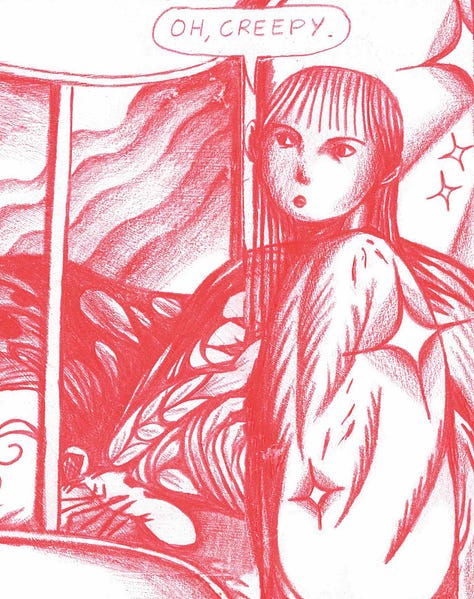


Julie Doucet is a hero to many since setting the pace with her 90’s comic book series, Dirty Plotte, in which she mixed autobiography with absurdity, fantasy, and the casual horror of everyday life. Many years since its closure, the impact of Dirty Plotte is still felt, and can be seen in contemporary comics like those from Angela Fanche and Jordan Rae Herron. Of course, the new generation undeniably have their own stories to tell, but a tradition is made clear in the mixing of autobiographical source material, effortlessly woven with dream imagery and the fantastic.
Kari Cholnoky Interview
Kari Cholnoky is a painter in NYC who makes dense, textural work, often protruding from the walls with a mix of materials and layered mediums that can be hard to distinguish amidst the additive onslaught that the finished pieces become. She is currently represented by Nicelle Beauchene Gallery, and had a solo show there earlier this year, which I was able to see while visiting.
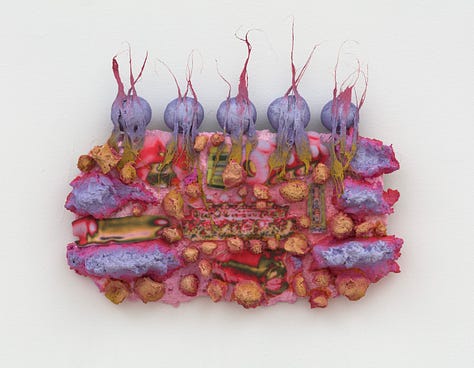
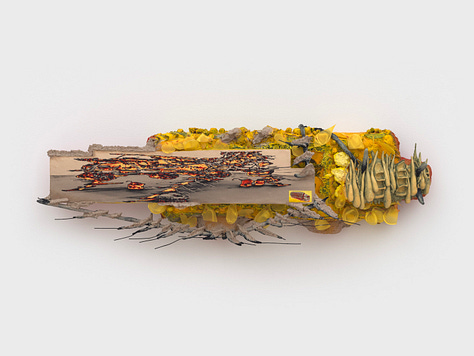
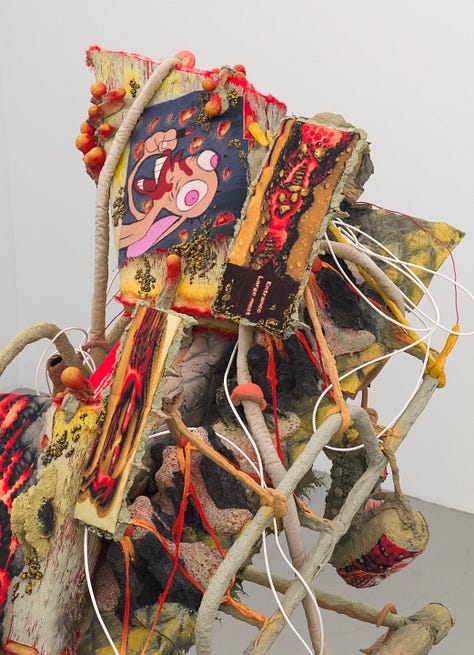
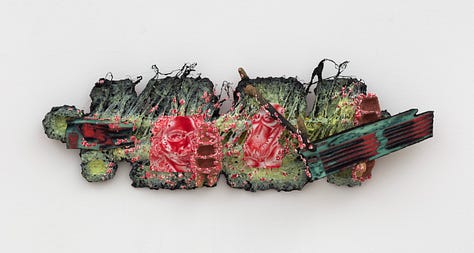
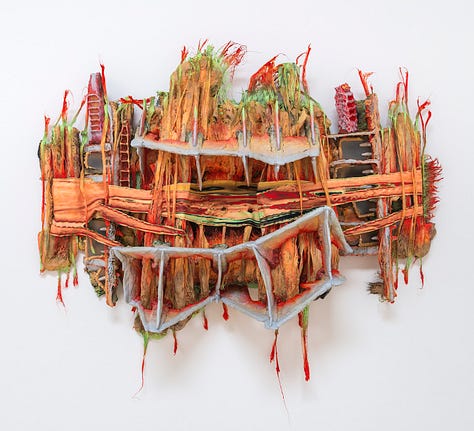

Kari contributed an 8-page section to ALIVE OUTSIDE, which appears between works by Joey Haley and Andy Cahill. We had a brief exchange to discuss her work and perspectives on painting, which is transcribed below:
ALIVE OUTSIDE: Books are a part of your usual creative practice, but you usually approach them more like individual sculptural objects with layers of fleece and paint and unknown miscellany all stitched together, and with no apparent intention to ever be produced as multiples. However, you have published zines before, and for your submission to ALIVE OUTSIDE, you prepared a series of digital collages which are presented as a bound-in booklet. How does your process of image-making change when you are knowingly creating something intended for duplication?
Kari Cholnoky: I like medium-specificity, so if I know something is going to be printed in book form, I'm thinking about how the object exists amongst its fellow books or pages or its implicit role as a device for dissemination. I tend to name my paintings after real or made-up machines or weapons or structures and when it comes to making a zine or printed object, I find myself drawn to the possibility of dressing it up like an instruction manual or textbook or some other such utilitarian guide for the operation of something. I am generally obsessed with what I claim is the accurate rendering of systems, so I find humor in the promise of clarity that the cover might suggest and then the reality of absolute mess that the inside reveals. You get to play with timing much more directly in printed material. I'd like to make instruction manuals for every painting I make.
AO: How much does the work that you're making pull from your personal life? Do your individual experiences make it directly into your work, or are you responding more to universal or systemic observations?
KC: I guess those things for me are parts of a large overlapping Venn diagram. My interests or paths of ongoing research are influenced by my life. I’ve never made anything that is explicitly about any one topic or memory or idea. I’m generally doing the thing you’ll hear over and over *not* to do in art — trying to put all of the ideas into the painting. And generally I’ll tuck a piece of my own organic matter into it somewhere if it leaves the studio and goes out into the world — a bloody bandaid, a tooth, some hair — which turns the whole thing in to a kind of time capsule of my general understanding of things at that moment.
AO: In one of your pieces for ALIVE OUTSIDE, Noam Chomsky looks out from the bottom of the page while a rocket launcher points at the back of his head. Rocket launchers and other war machines are recurring images in your visual repertoire, and these symbols carry a specific charge that's certainly not apolitical, but in no way is it specific either. How do you see your work in a political context?
KC: In using some of that imagery I guess I’m trying to bring up ideas about unavoidable or intrinsic action and consequence, about how intertwined consumption and conflict are, or economy and violence. And maybe weirdly I see formal similarities between things like rocket launchers and cardboard display stands or racks of products for sale. I’m not making a value judgement here, I’m just trying to make work that deals with the reality of our existence honestly. And Noam represents an interesting intellect to me because of his dual interests in politics and in linguistics — to me it shows that he understands how deeply embedded systems of power or structure can be, influencing what we see but leaving us unsure of where we end up having choice in a given system.
Now, the work inside of this context is a hard thing to grapple with! Ultimately I’m making functionless objects that I hope people with excess income will buy. I’m a participant in the systems I criticize. I guess I hope that, by making work for myself as the primary consumer — by putting my own satisfaction or enjoyment ahead of anyone else — that I can make work that is to some degree agitational within established hierarchies of value and beauty and fashion. I’m not making the work look like this strategically, it just turns out that my understanding of what looks good is basically the complete opposite of what “beautiful” might be to most people. People think I’m going through great pains to make the work look “grotesque” when, in reality, I work usually for years and years on each piece, just trying to make it look good.

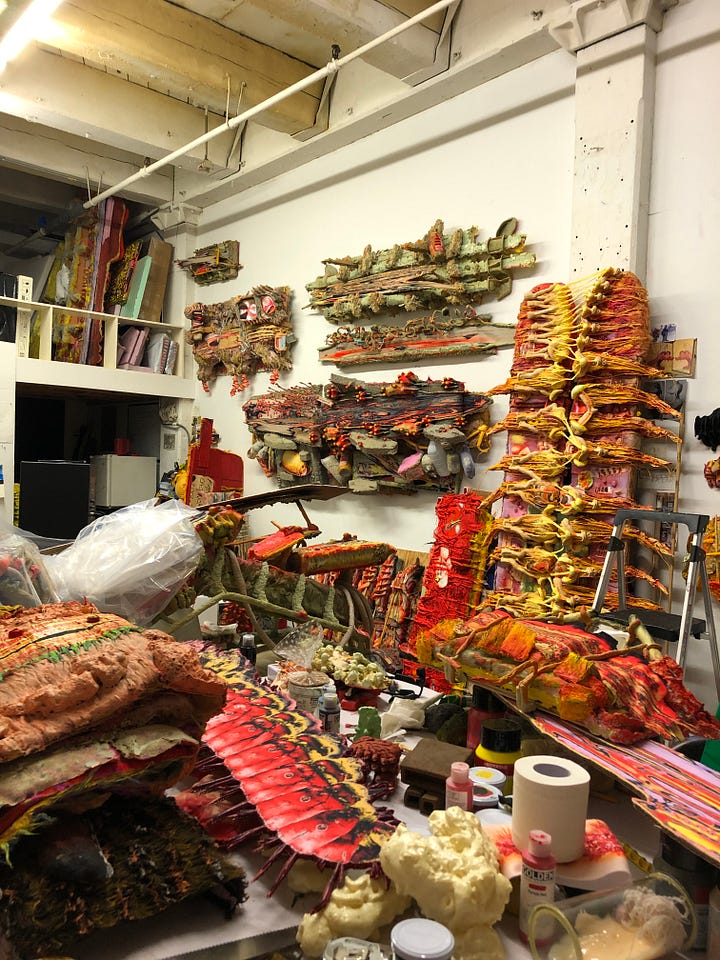
On the Importance of Pre-Orders:
Thanks to those who have already supported the publication of ALIVE OUTSIDE!
Pre-orders are very important to this book’s launch for two reasons:
I am a small publisher, and do not have a lot of storage space for keeping backstock. Pre-orders will allow me to immediately ship out books once they are finished, so that I do not have to budget for a storage unit.
Proceeds from the first 260 books sold during the pre-sale period will be dedicated to an artist fund that will pay all of the contributors for the work that they’ve submitted.
To incentivize pre-orders, I’m publishing a few “Items Outside ALIVE OUTSIDE” that will be included only with direct pre-orders:::


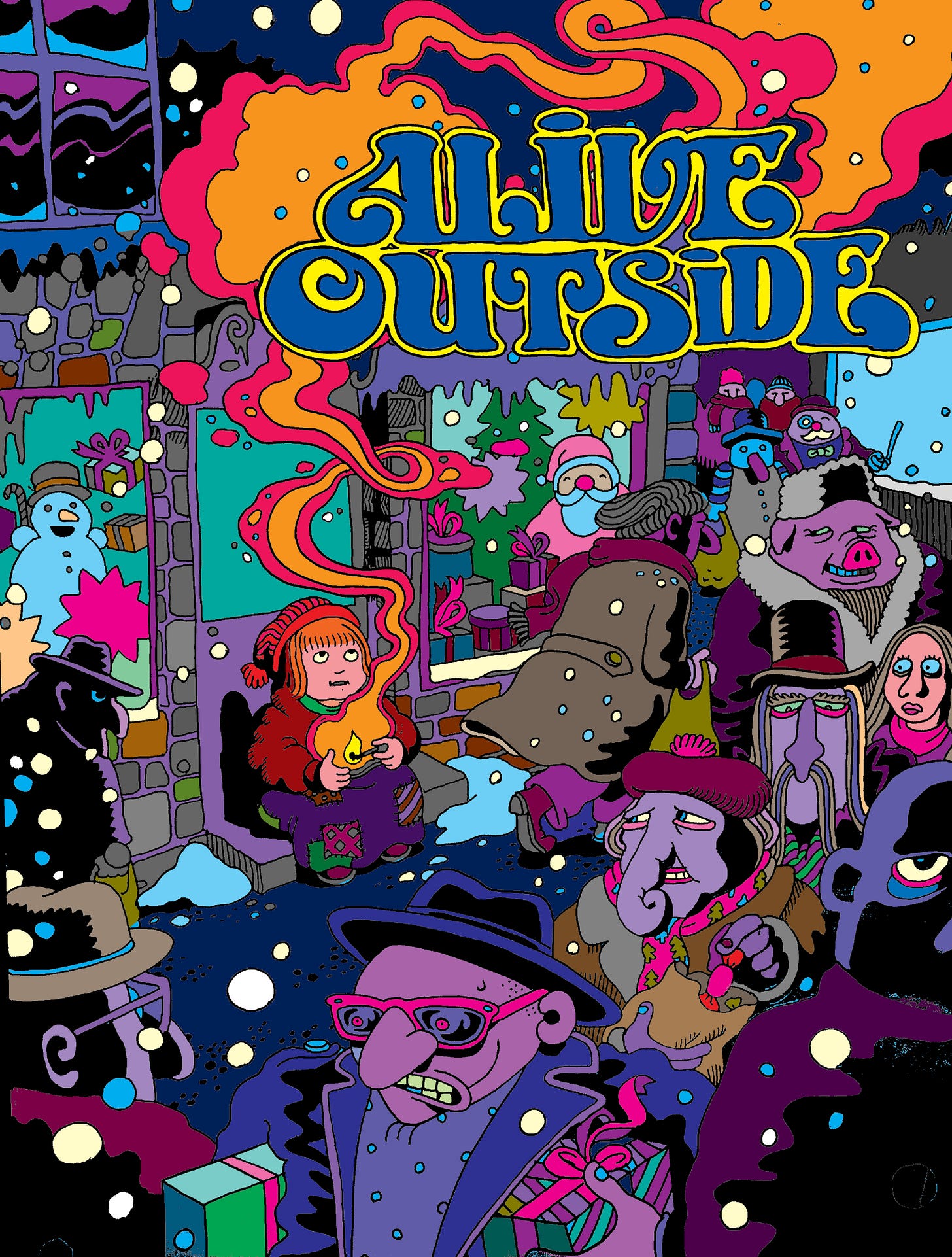
🙏